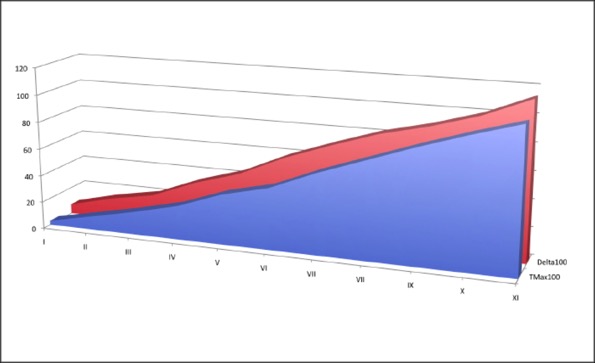Rollei Film Developer RLS and Delta100 and Tmax100 (October 20, 2008)
Like it or not, but the new Leica lenses with focal length 21 to 50mm require a full 135 format (24 x 36mm) film to evaluate the true potential of these lenses. I am currently analyzing the new Elmar-M 3.8/24mm asph with the current Elmarit-M 2.8/24mm asph and this can be done only with film. At least for this moment in time. The results of this analysis will be the content of another article. here I will focus on the AgX film and the qualities they exhibit.
I selected the classical ISO100 class and have chosen the Ilford Delta100pro and the Kodak Tmax100 professional, now being labeled as the finest grained film in its class. The developer is another topic of some interest. For a long period I used high acutance surface type developers, but they do exaggerate the grain clumps. Not a problem when doing the full chemical process, but a slight nuisance when scanning the negatives. I settled for the Rollei RLS, previously known as LP-Cube XS and before that as the CG512. The formula has been designed by Uddo Raffay, at least the equal of the famous Geoffrey Crawley with the FX-series.
For this test I used the Rollei RLS as this is a so-called deep layer developer, with extremely fine grain. The developer is not new, but not very well known. This is a pity as the developer scores very high points in all disciplines. As a deep layer developer, the nominal ISO speed of the film cannot be maintained and you need to set the ISO100 to EI50. Not a problem with Leica lenses and you will often use a tripod or a flash to get best results. Temperature is 24 degrees centigrade and development rhythm is one every 30 seconds. To get reproducible results I used the Heiland TAS processor.
Heiland TAS processor
This is a smart piece of equipment, that in its most recent incarnation has the best possible processing mechanism that I know of. IT is a joy to use, very easy to operate and very reliable and durable. It should be part of every serious darkroom.
Characteristic curves
Below you will find the graphs of these film/developer combo’s. Both show excellent behaviour. The optimum exposure setting for the Delta100 is EI40 and for the Tmax100 it is EI32, just as the original and famous Panatomic-X. I used the recommended development time of ten minutes, but the curves could become somewhat more S-shaped when using ISO50 and stretch development times to 11 ad 12 minutes. There is some room for experimentation here. The remarkable point to notice here is the straight line characteristic of these 'curves'. The normal S-shaped curve compresses the grey values in the mid area, delivering more contrast but also less finely nuanced gray tones. The curves here bring the most of grey tones out of the film/lens combination and note also that the curve accommodates a true 11 to 12 stops of contrast reproduction. This dynamic range is well above what we are expected to get from digital capture. The base and fog value for the Kodak film is D= 0.21 and for the Ilford version D=0,29.

Definition and grain
The grain of the Tmax film is slightly finer than that of the Ilford contender. But the difference is slight. The definition shows the true differences between these two films. The Ilford Delta gets 65 lp/mm, which is better than what you get with the M8 sensor/Leica lens combination. The Tmax100 is able to record 80 lp/mm, but the Ilford definition delivers fine detail with very crisp and clean edges, where the Kodak has some trouble to differentiate between the black and white stripes.
Use of the film
A very wide tonal range with excellent definition of fine detail and excellent separation of grey values with moderate sensitivity might be the short description of these films and developer. The negatives lack the bite of the more aggressive working acutance developers, but the richness of the tonal reproduction and fine detail definition is certainly a positive characteristic.
And we have a medium that is easy to use, can be handled without technical support at least for a century, has no dependance on hardware or software and can be inspected and handled by the human eye without additional equipment. Digital capture is certainly easier in normal use, but the AgX medium still shows strengths not seen in the digital workflow. Easy processing and honest reproduction are the two most important characteristics. And to exploit the full capabilities of Leica lenses, there is no choice but AgX.


